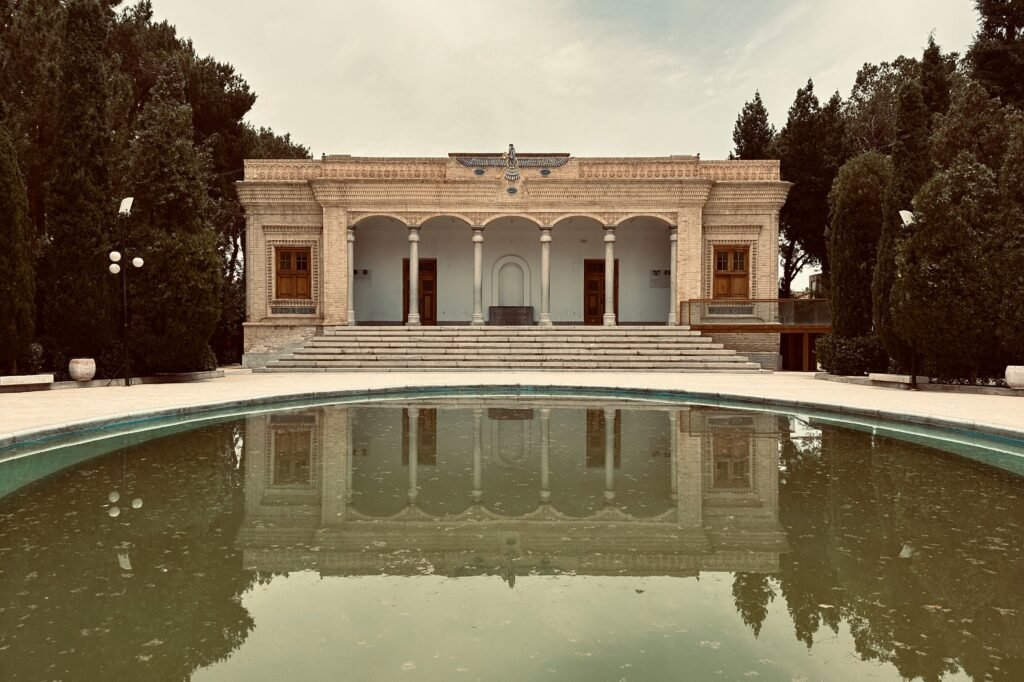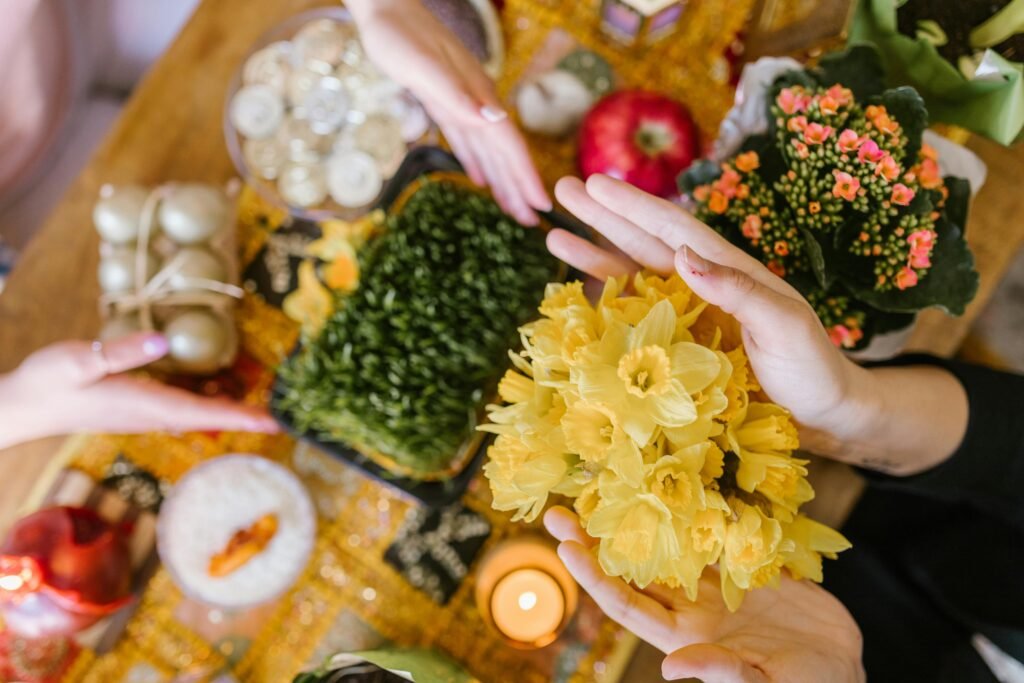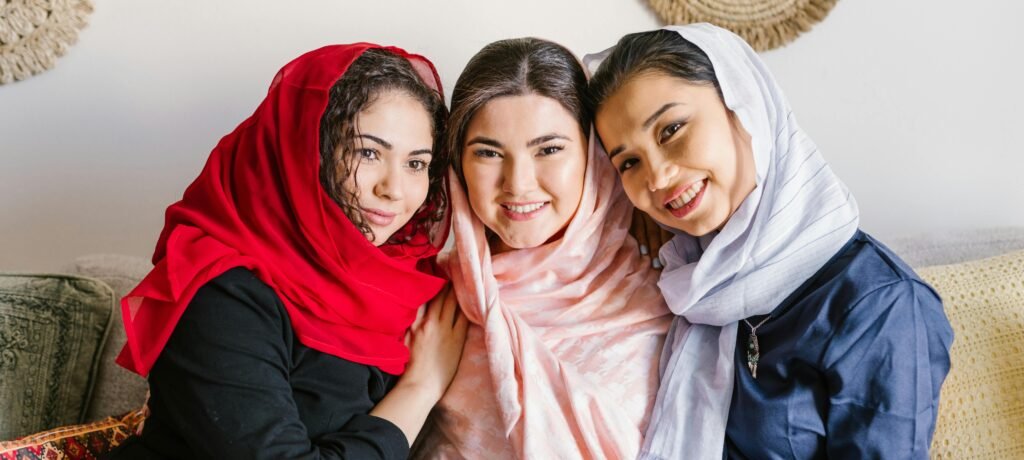Nowruz, celebrated by over 300 million people worldwide, marks the arrival of spring and is deeply rooted in ancient Zoroastrianism traditions. Known as the Persian New Year, it’s observed on or around the 21st of March, coinciding with the spring equinox, and is recognised by the United Nations as the International Day of Nowruz. This secular holiday, observed for over 3,000 years, symbolises renewal and harmony across various cultures, including Iranians, Afghans, and many others.
The festival’s traditions, such as house cleaning, shopping for new clothes, and preparing specific foods, reflect the spirit of renewal and readiness for the new year. Celebrated worldwide, from the Silk Roads Heritage regions to diaspora communities across the globe, Nowruz brings together people from diverse ethnic backgrounds to honour a tradition that transcends cultures and geographies. This article will explore the rich history, traditions, and global celebrations of Nowruz, illuminating its significance as a testament to cultural diversity and unity.
The Historical Roots of Nowruz

- Origins and Evolution:
- Nowruz traces its origins to the ancient religion of Zoroastrianism, celebrated for over 3,000 years across diverse regions, including Western Asia, Central Asia, and the Balkans.
- The festival’s name, “Nowruz,” combines Persian words for “new” (now) and “day” (ruz), symbolising the start of the New Year on the spring equinox.
- Historical Significance:
- Celebrated as an important day during the Achaemenid Empire, Nowruz saw its significance grow during the Sassanian period, becoming a day of royal audiences, cash gifts, and the pardoning of prisoners.
- Despite the Muslim conquest of Persia in 650 CE, Nowruz persisted as the main royal holiday during the Abbasid period, showcasing its resilience and adaptability.
- Cultural and Religious Adaptations:
- Initially a royal observance with feasting and poetry, Nowruz evolved to include various traditions and rituals, integrating Islamic meanings over time.
- The festival has faced bans in regions like Afghanistan and Central Asia under anti-religious policies, yet it remains a symbol of resistance and cultural identity in Iran.
Traditions and Symbols of Nowruz

One of the most iconic symbols of Nowruz is the Haft-Seen table, which showcases seven items starting with the Persian letter ‘S’. These items are deeply symbolic, representing life, renewal, and prosperity. They include:
- Seeb (apples), symbolising beauty and health.
- Senjed (dried oleaster berries), for love and affection.
- Samanu (wheat pudding), representing affluence and fertility.
- Somaq (sumac), symbolising the sunrise and the spice of life.
- Serkeh (vinegar), for patience and age.
- Seer (garlic), signifying medicine and health.
- Sabzeh (wheat, barley, mung bean, or lentils), for rebirth and renewal of nature.
Additionally, the Haft-Seen table may also include a mirror reflecting the past year, painted eggs for fertility, a goldfish symbolising new life, and candles representing light and happiness. Special sweets like baklava and sugar-coated almonds are shared and believed to bring good fortune.
Celebrations also involve unique customs across different regions, showcasing the diversity of Nowruz observances. For instance, in Azerbaijan, people jump over bonfires as a purification ritual, while in Kyrgyzstan, filling empty vessels with water on the eve of Navroz is a tradition to welcome the holiday. Kazakhstan celebrates by erecting dastorkhan in traditional yurts and sharing a holiday meal of Nauryz koshe with seven ingredients symbolising different aspects of life.
Nowruz Celebrations Around the World
Nowruz celebrations are a vibrant expression of culture and heritage across various countries, each with its own unique customs and traditions. Here are some highlights:
- Azerbaijan: The festivities include public dancing, folk music, and sporting competitions, bringing communities together in a lively celebration of the New Year.
- Iran: Marking the start of the New Year in the official Solar Hijri calendar, Nowruz in Iran is a two-week affair filled with family visits, communal meals, and gift exchanges. It’s a time when the entire country comes alive with the spirit of renewal and joy.
- Afghanistan: In Mazar-i-Sharif, people gather at the Shrine of Hazrat Ali to watch Buzkashi, a traditional game, as part of the Nowruz celebrations. This event draws large crowds, showcasing the country’s rich cultural heritage.
- Tajikistan: Parks and public spaces become hubs of festivity as people come together to dance, sing, and feast, embracing the joyous mood of Nowruz. It’s a demonstration of community and shared happiness.
- Central Asia: In countries like Uzbekistan, Kazakhstan, and Kyrgyzstan, Nowruz is celebrated with a variety of local customs, from communal meals to unique traditions that reflect the diverse cultural tapestry of the region.
These celebrations underscore the universal themes of Nowruz: renewal, unity, and the joy of life, as observed across different countries along the Silk Roads and beyond.
Culinary Delights of Nowruz

The culinary traditions of Nowruz are as diverse as the regions that celebrate this vibrant festival. Central to the Nowruz feast are dishes that symbolise renewal, prosperity, and health. Here’s a glimpse into the traditional foods that grace the Nowruz table:
- Main Courses:
- Sabzi Polo Mahi: A fragrant dish of rice mixed with herbs served with white fish, embodying rebirth and life.
- Ghormeh Sabzi: This Persian stew combines braised lamb with an assortment of fresh herbs, epitomising the theme of renewal.
- Kuku Sabzi: A herbed omelette packed with greens, this dish is a testament to the freshness of spring and the new year.
- Sides and Appetisers:
- Ash Reshteh: A thick, hearty soup with noodles, chickpeas, and beans, symbolising the many paths in life.
- Borani Esfenaj: A spinach and yoghurt dip, offering a refreshing start to the meal with its mint and basil flavours.
- Desserts and Sweets:
- Baghlava (Persian Baklava): Sweet, layered pastry filled with nuts and soaked in rosewater syrup, promising sweetness for the year ahead.
- Cardamom and Rose Thumbprint Cookies: These cookies blend cultural traditions with their unique flavours, symbolising unity and peace.
Each dish served during Nowruz not only delights the palate but also carries deep symbolic meanings, contributing to the overarching themes of renewal, prosperity, and community.
Nowruz in Modern Times
Nowruz, a festival with a history spanning over 3,000 years, continues to be celebrated with great enthusiasm around the world, adapting to modern times while retaining its rich traditions. The United Nations’ recognition of March 21 as the International Day of Nowruz underscores its global significance and the shared joy it brings across cultures. Modern celebrations include:
- Pre-Nowruz Preparations:
- House cleaning and shopping for new clothes symbolise a fresh start.
- Preparing traditional foods and giving children money gifts (eidi) foster a sense of community and generosity.
- Charshanbe Suri and Sizdah Bedar:
- The eve of the last Wednesday before Nowruz, known as Charshanbe Suri, is marked by jumping over bonfires and lighting fireworks, symbolising purification and energy.
- The festivities conclude with Sizdah Bedar on the thirteenth day after Nowruz, where people picnic outdoors, discard the Haft-sin’s greenery, and engage in playful pranks.
Despite economic challenges leading to more austere celebrations in some regions, such as Iran, the spirit of Nowruz persists. Public dances, often seen as acts of defiance, and concerns about climate change affecting traditional practices highlight the adaptability and resilience of Nowruz celebrants. This blend of ancient traditions and contemporary concerns illustrates the ongoing relevance and evolution of Nowruz in modern times.
Conclusion
Nowruz, with its historic roots deeply embedded in the ancient traditions of Zoroastrianism, emerges as a testament to the resilience and adaptability of cultural practices over millennia. Over 300 million people worldwide participate in this festival, which not only heralds the arrival of spring but also represents themes of renewal, unity, and prosperity. Through the extensive customs ranging from the preparation of special foods to the diverse traditions observed across different countries, Nowruz encapsulates a spirit of togetherness and renewal that transcends cultural and geographical boundaries. The significance of Nowruz, therefore, lies not only in its ceremonial rituals but also in its ability to foster communal harmony and connectivity in an increasingly fragmented world.
As we reflect on the commemorations of Nowruz around the world, from the vibrant table of Haft-Seen to the communal outdoor picnics of Sizdah Bedar, it becomes apparent that this festival holds a universal appeal, embodying the shared values of hope and rebirth. The recognition of March 21 as the International Day of Nowruz by the United Nations further underscores the importance of this celebration in promoting cultural diversity and understanding among peoples of different nations. With its rich historical nuances and modern-day relevance, Nowruz serves as a beacon of light that continues to guide humanity towards unity and mutual respect, reminding us of the continuous cycle of life and the promise of new beginnings.
You might also like:


